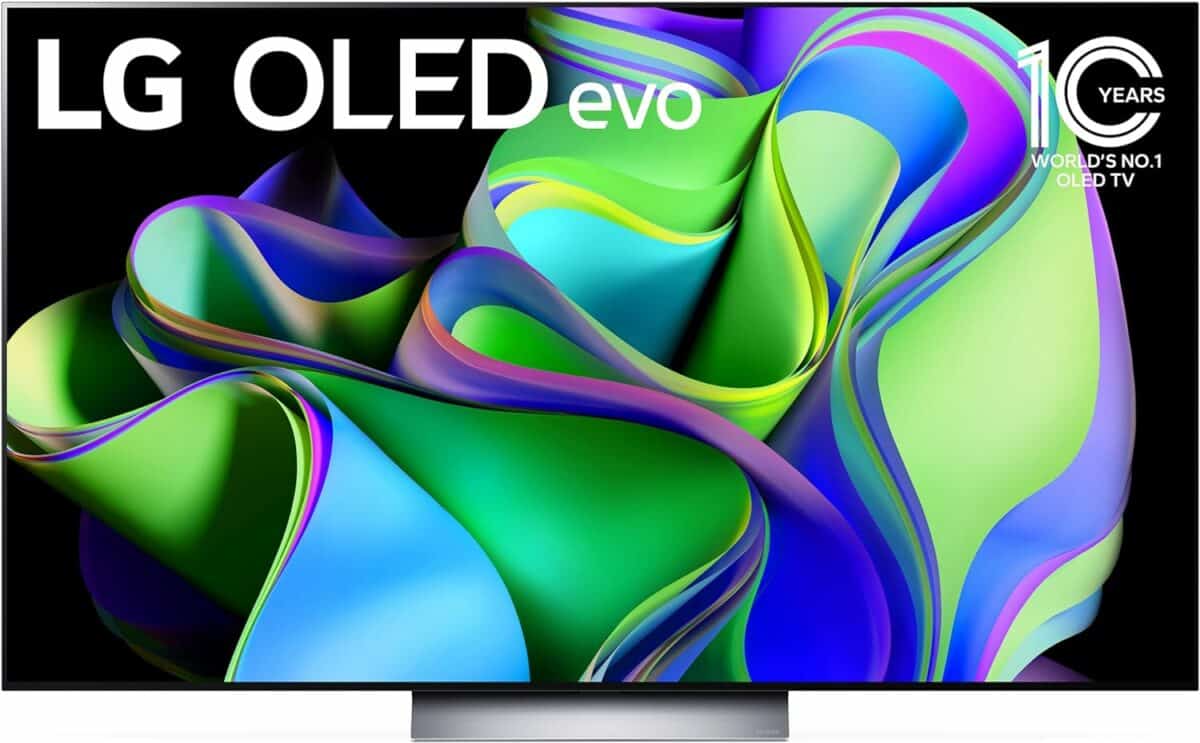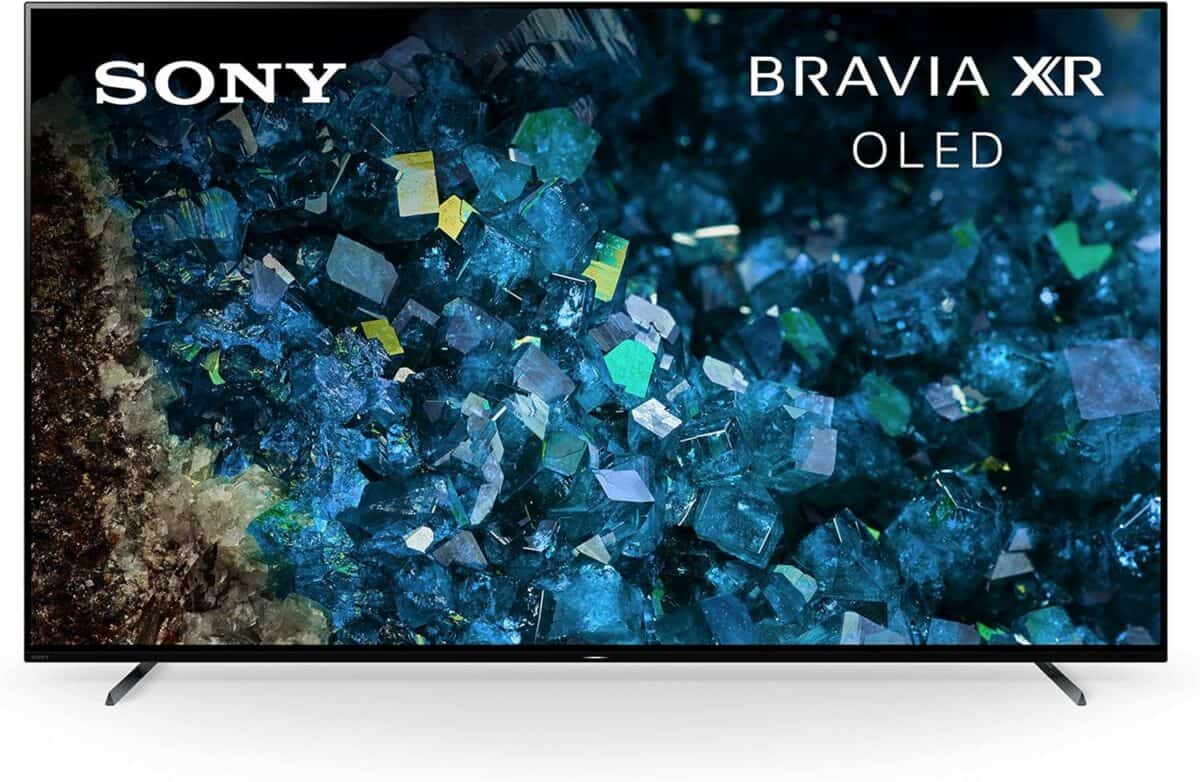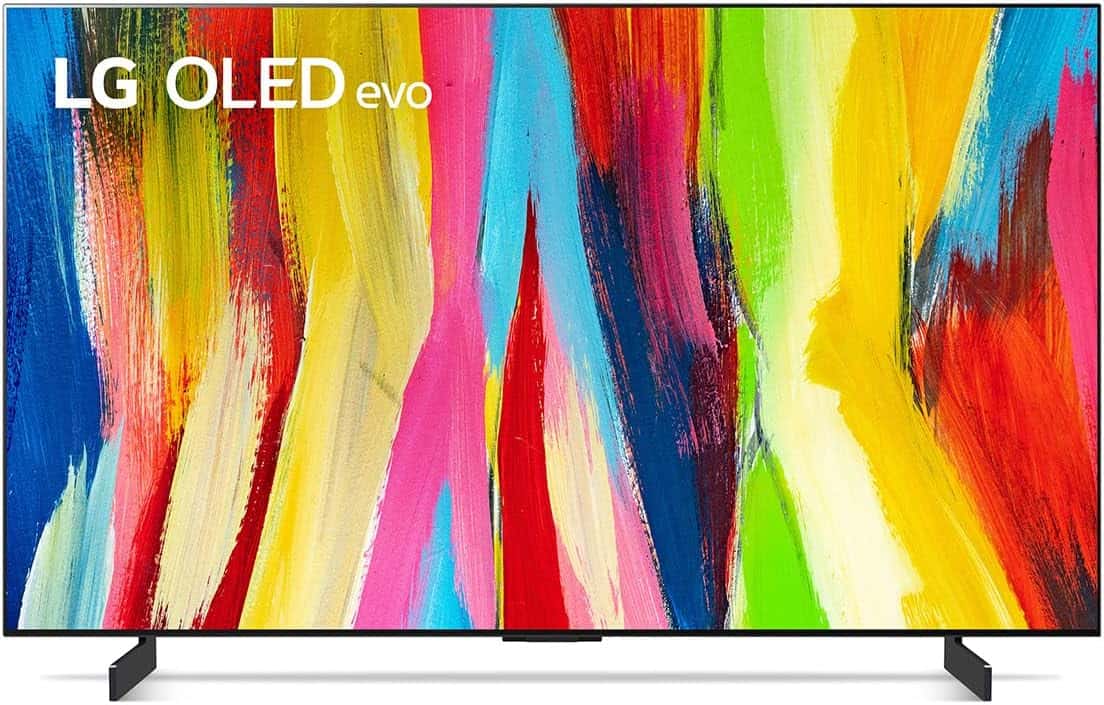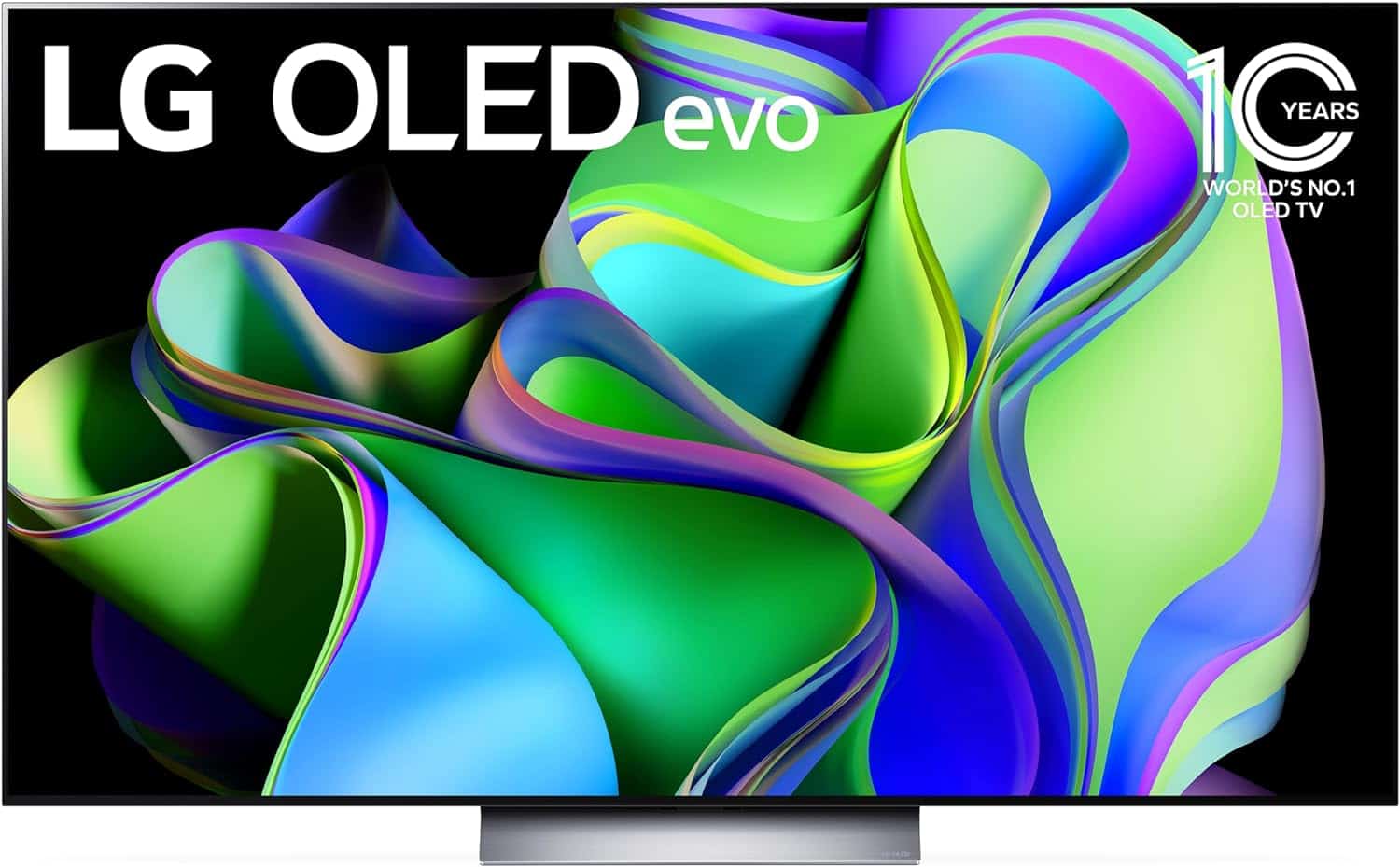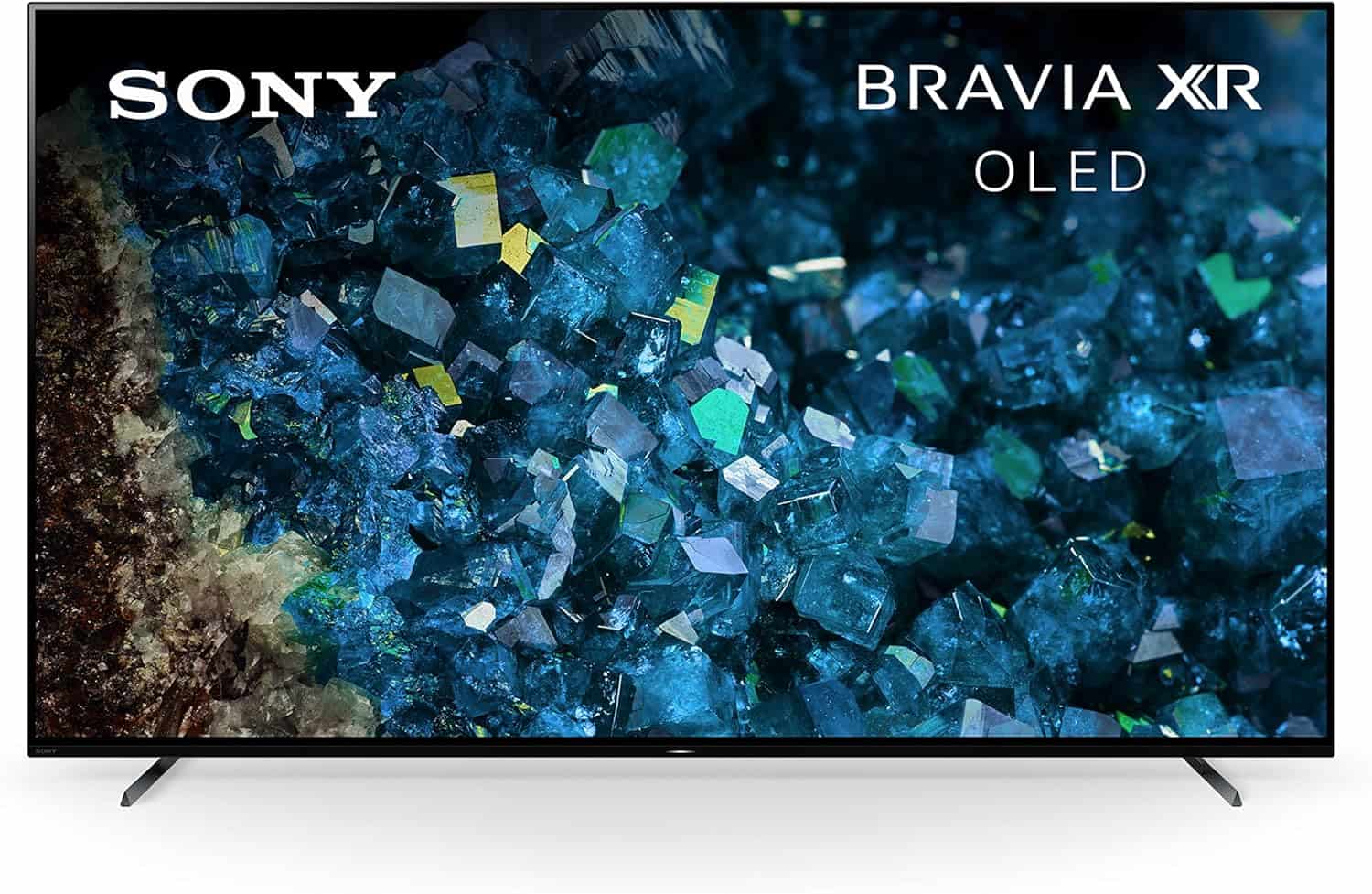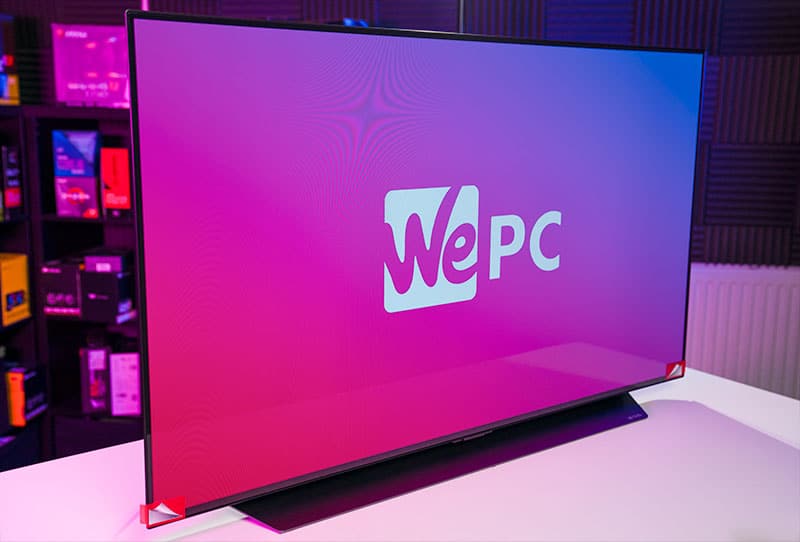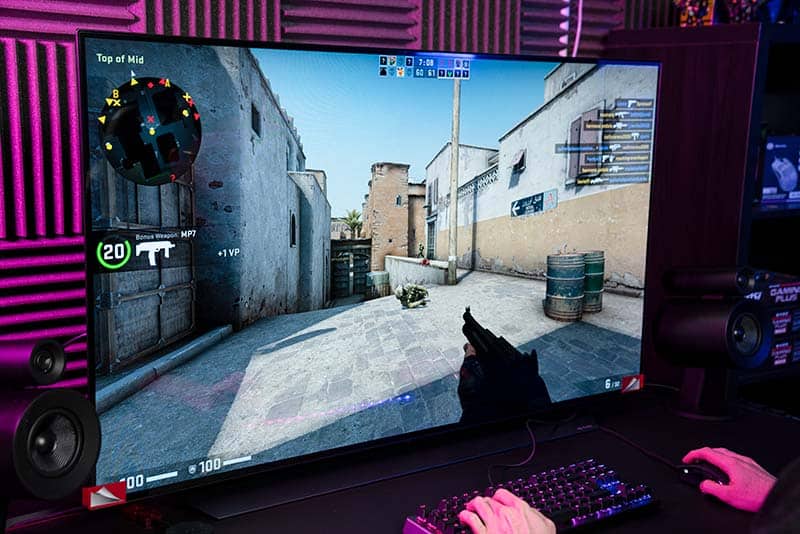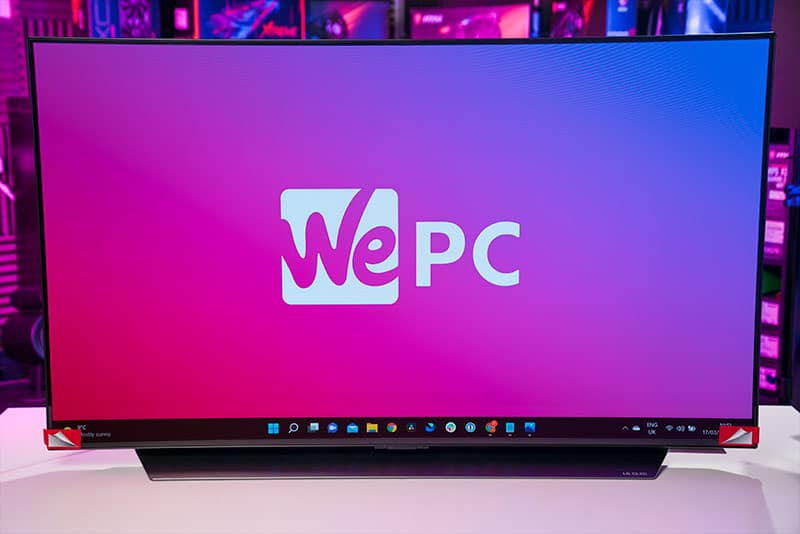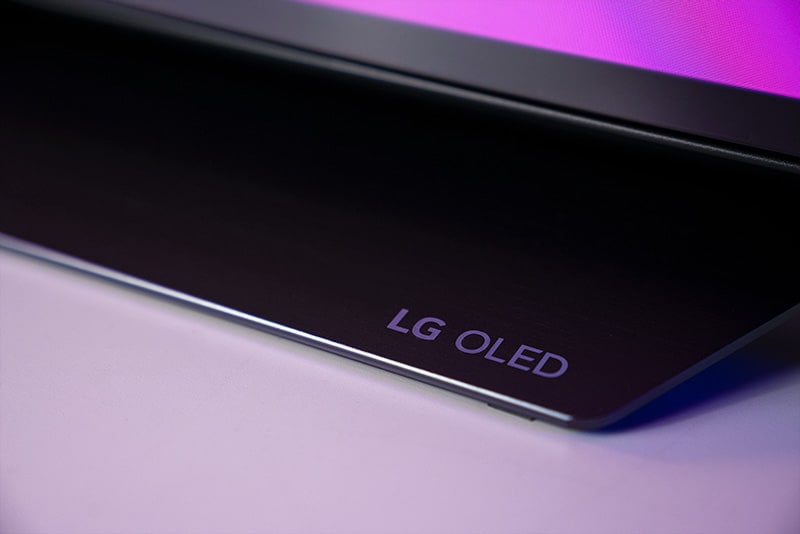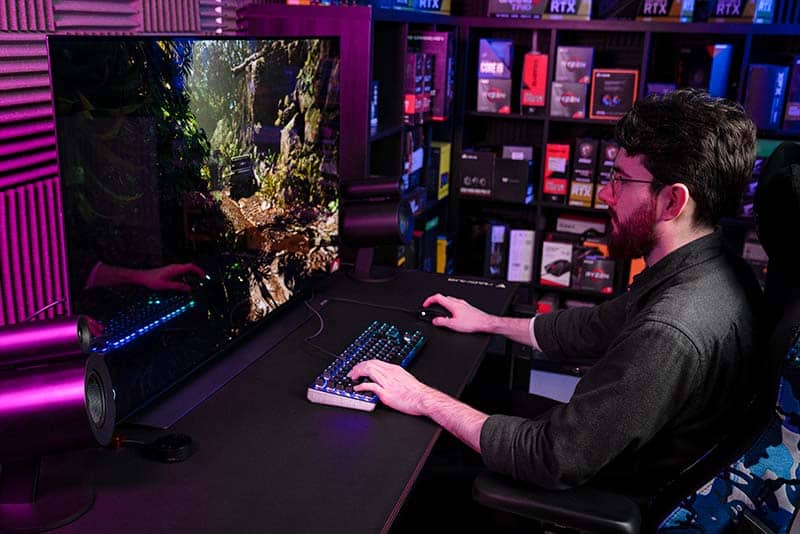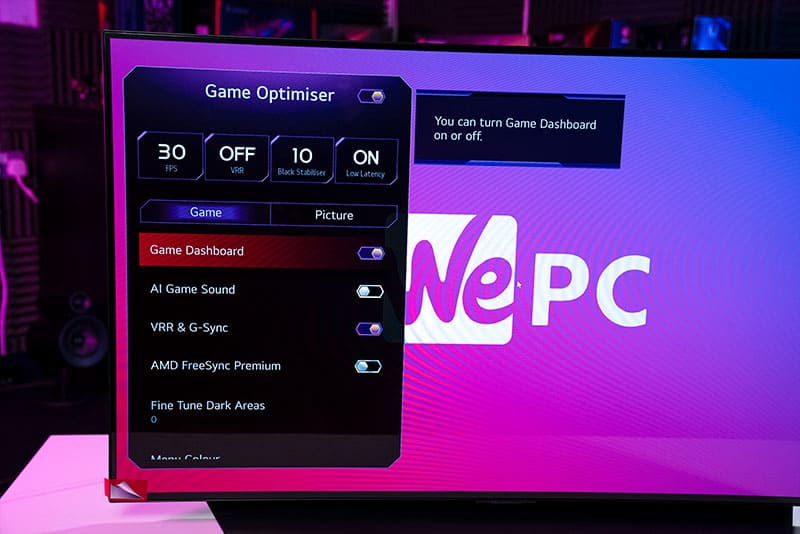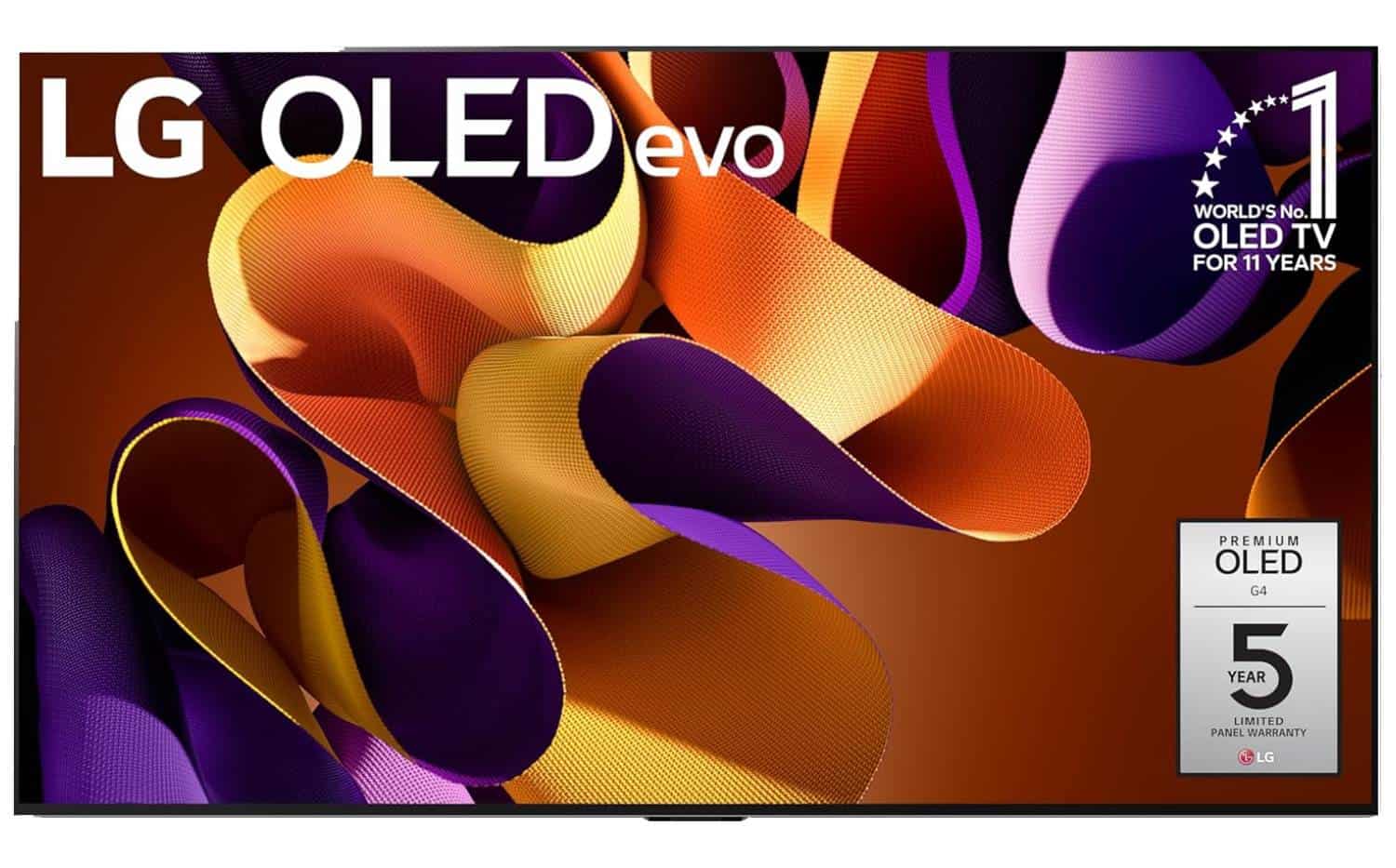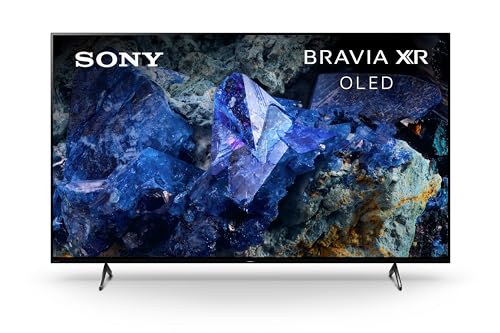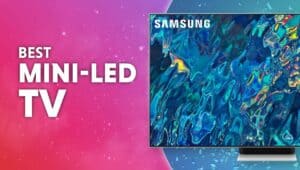Best OLED TV 2024 – top picks from LG and Sony reviewed
A closer look at the OLED market to find only the best OLED TVs on offer
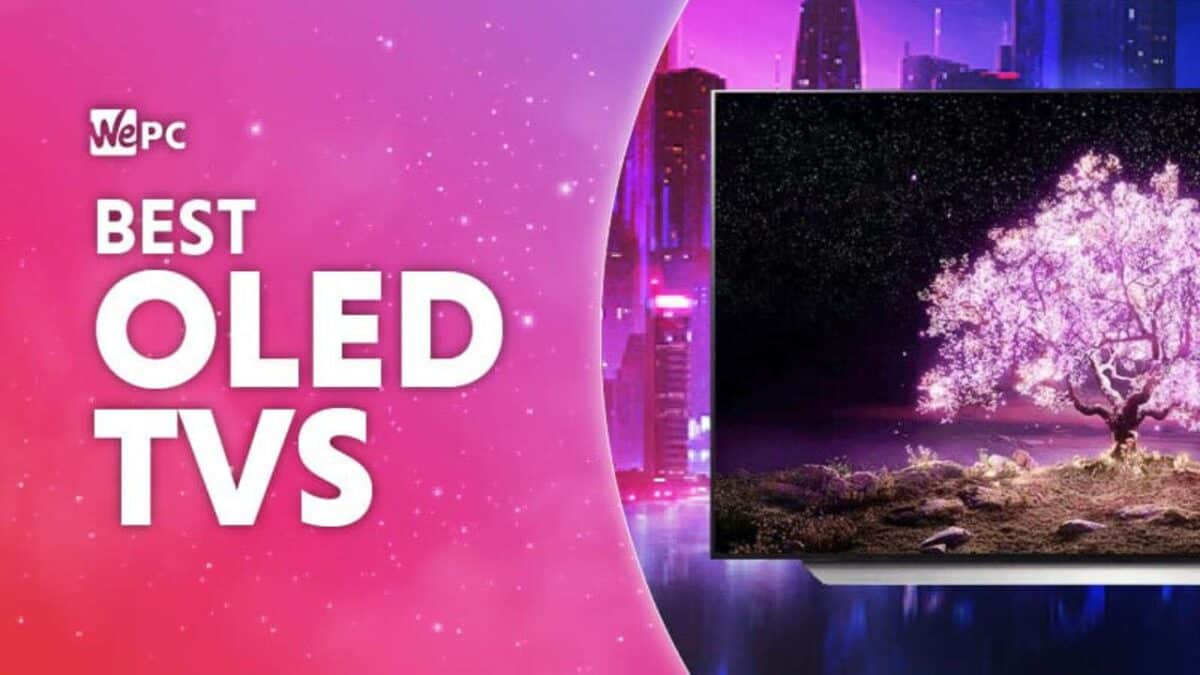
WePC is reader-supported. When you buy through links on our site, we may earn an affiliate commission. Prices subject to change. Learn more
OLED technology has been around for over 10 years now, and since its arrival, the best OLED TVs have only grown in popularity. Alongside stunning image quality, one of the main reasons for this popularity spike is due to price. Since their launch back in 2013, OLED TVs have seen a large decrease in market pricing – with the latest arrivals offering up excellent value when compared against leading alternatives. Top brands like LG dominate this space, so it’s not surprising to see the likes of the LG C3 OLED in our top picks alongside alternatives such as the Sony Bravia XR A80L.
OLED TVs are different from traditional LED-backlit LCD TVs as they provide illumination on a pixel level. Not only does this help provide stunning true blacks and an excellent contrast ratio but it also eradicates annoying screen artifacts such as blooming and backlight bleed. Better still, with an infinite contrast ratio, OLED TVs can deliver incredible HDR performance – a feature prioritized by most gamers and everyday users, especially when paired with unmatched responsiveness, making them the best gaming TVs in many regards.
Best OLED TV 2024 – in-depth reviews
Despite OLED TVs offering up a near-perfect résumé on paper, they’re still at risk of permanent burn-in and don’t get nearly as bright as LCD alternatives. Fortunately, OLED manufacturers are constantly working on ways to improve the technology, with anti-burn-in features installed in all new models.
All being said, we’ve scoured the web to find only the best OLED TVs the market has to offer. So, if you don’t compromise on quality, look no further – these OLED TVs have you covered.

- Sizes: 42″, 48″, 55″, 65″, 77″, 83″
- Screen technology: OLED
- Resolution: 3840 x 2160 (4K)
- Refresh rate: 120Hz
- Panel type: WOLED
- HDMI standard: HDMI 2.1
The LG C3 is a top-tier choice which doesn’t have to break the bank. With the launch of the C4, it is dropping in price – and we’d recommend it as our overall pick at the moment. It is LG’s 2023 mid range option, offering infinite contrast levels, excellent color accuracy, rapid response time, and high refresh rate to cover all of your entertainment needs.
- HDMI 2.1 for 4K @ 120Hz
- Alpha 9 gen 6 AI processor
- Wide range of sizes available
- Solid value for money as mid-range option
- Lacks MLA, unlike the G3
Our number one pick at the moment has to be the LG C3 OLED. While it isn’t the very best in LG’s OLED range in terms of specifications, it is next in line and offers some of the best value for money as a mid-range pick which is great for the vast majority of users. The large variety sizes means you can install this in your big-screen home theater, or even opt for the smallest 42-inch model which many PC gamers actually make good use of in a desktop setting. When comparing LG C2 vs LG C3, there are some improvements to bridge the generational gap, making the C3 just one step ahead of its popular predecessor due to a newer processor, updated webOS, and better brightness levels.
The LG C3 comes with everything you’d expect from an OLED gaming TV. Full 4K visuals at a 120Hz refresh rate in any of the four HDMI ports (2.1 standard). It is also backed up by variable refresh rate rate and support from AMD FreeSync Premium to keep screen tearing at bay, Nvidia G-Sync compatibility is there too of course. It is also highly responsive with a quick 0.1ms response time to eliminate ghosting and ensure it is one of the best TVs for dealing with motion blur – it also boasts low input lag.
Even if gaming isn’t you main focus, you get all the smart TV features you could ask for – and navigation is easy thanks to LG’s Magic Remote. It runs on webOS to give you access to popular streaming services such as Netflix, Disney+, HBO Max, and many more. Overall, this a fantastic option across the board and a great option if you want the latest tech, boasting an AI processor and bright LG OLED evo panel – albeit not as bright as the latest G-Series picks which we’ll get onto later.
- Sizes: 55″, 65″, 77″, 83″
- Screen technology: OLED
- Resolution: 4K
- Refresh rate: 120Hz
- Panel type: WOLED
- HDMI standard: HDMI 2.1
Sony is no stranger to producing high-quality OLED displays, and the A80L fits the bill.
- Exceptional image quality for movies
- Outstanding image processing from Sony, as expected
- Decent gradient handling
- Packed with features, including exclusives for PS5
- Immersive sound quality built-in
- Remains an expensive option
- Less range of sizes than the LG C-series
- Only two HDMI 2.1 ports
Our runner up award goes to the hugely impressive Sony Bravia XR A80L, another model that can be considered to be the best 4K TV for gaming. This TV is a superb choice for any individual who prioritizes high-end features and stunning image quality. The A80L delivers exceptional image quality in daytime and night-time scenarios thanks to its high peak brightness. Like the LG C3, the Sony A80J uses a WOLED panel – bringing great levels of peak luminance to the table.
The A80L performs to an incredibly high standard whether it be SDR or HDR content. Its OLED panel delivers a solid peak brightness that allows for some of the best HDR experience at this price point. It’s also great for gaming on PS5 thanks to its exclusive gaming features (as a Sony product) for the popular console alongside variable refresh rate technology and ALLM via HDMI 2.1 for up to 120Hz.
Overall, the A80L is a top-tier TV that ticks many of the right boxes. If you’re looking for exceptional HDR performance in both daytime and night-time situations, look no further. And while the A90L is fitted with an WOLED panel, their next model up – the A95L features Samsung’s QD-OLED TV technology for that extra boost in brightness. One last thing to mention is that A90L has excellent built-in speakers with three actuators, two subwoofers, and Acoustic Surface Audio+ to create both powerful bass and a wide soundstage.

- Sizes: 42″, 48″, 55″, 65″, 77″, 83″
- Screen Technology: OLED
- Resolution: 4K Ultra HD 3840 x 2160p
- Refresh rate: 120 Hz
- Panel type: WOLED
- HDMI standard: HDMI 2.1
The LG C2 OLED has been a fan favorite for a couple of years now. Both the C3 and C4 have come along, but we’d still recommend the C2 if you can find it for a great price. We had almost nothing to complain about back when we reviewed it, so it holds on as our great value option from a previous generation. Excellent responsiveness paired with stunning visuals makes for a complete package.
- Excellent gaming performance – 4K at 120Hz
- Great value for money these days
- Sleek and stylish design
- VRR support for FreeSync and G-Sync systems
- Brightness levels could be better
- Not as up to date as our other choices
Our best OLED TV from the not-so-far past goes to the LG C2, a mid-tier OLED TV that offers up fantastic value for money. Not only is this TV superb in general viewing situations, it also excels in gaming too – offering up VRR support for both PS5 and Xbox Series X. Our LG C2 OLED TV review goes into great detail about this display and our testing of it.
As you can imagine, the picture quality of this TV is sensational thanks to the OLED panel found at its core. It features LG’s evo OLED panel, helping boost brightness – something we were impressed by in testing. Watching movies and TV shows on this TV is a very enjoyable experience. Best of all, however, is the TV’s HDMI 2.1 capabilities and VRR support. This combination means that users will be able to take full advantage of the latest next-gen consoles (PS5 and Xbox Series X) to achieve 4K gameplay at 120Hz. The LG C2 also features native VRR support for FreeSync systems and G-Sync compatibility for everything else. This is particularly useful when it comes to gaming as it reduces annoying screen artifacts such as screen tear.
Like all OLED panels, the LG C2 is at risk of permanent burn-in. However, LG has implemented some handy anti-burn-in features that detect when your TV isn’t be viewed and starts to rotate an image gallery instead. Furthermore, out-of-the-box colors aren’t great for this TV, meaning you might need to calibrate it for true accuracy based on our testing. As an older option, the LG C2 now produces excellent value for money in today’s market. If you want the best all-round OLED experience without splashing out on the latest models, look no further.
- Sizes: 55″, 65″, 77″, 83″, 97″
- Screen technology: OLED
- Resolution: 3840 x 2160 (4K)
- Refresh rate: 144Hz
- Panel type: WOLED (MLA)
- HDMI standard: HDMI 2.1
Looking for the most premium pick? Then we’d go for LG’s latest G4 OLED. Featuring their best panel technology to date with second-generation MLA, this is a bright OLED TV that outperforms the C-series with ease. This 2024 model has also been boosted up to 144Hz, which is a solid improvement for PC gaming. Outside of that, the latest a11 AI Processor offers excellent video processing.
- Bright Evo OLED panel technology with 2nd-gen MLA
- LG’s brightest TV in 2024
- Now offers up to 144Hz for smoother PC gaming
- Fantastic upscaling technology
- Suitable for a wide range of environments
- Built-in speakers sub-par compared to Samsung & Sony
- Will remain expensive for some time
The LG G4 is our best premium OLED TV and for good reason. Alongside stunning image quality, the G4 also delivers decent audio quality, though we’d always recommend a high-quality soundbar or surround sound system if you want to go all out for a premium viewing experience. The G4 features an ultra-thin design that makes the TV almost imperceivably when mounted on a wall (hence its ‘Gallery’ title) – which is important considering the 77″ or larger models are designed for wall mounting.
At the heart of this TV lies a very efficient OLED Evo panel that offers greater peak luminance when compared to the C-Series. This is thanks to the 2nd-gen MLA (Micro Lens Array) tech that is embedded within the OLED panel for a large brightness boost – now featured in the 83-inch model too. This makes it look great even in daylight or any well-lit room. Pair the additional brightness with the HDR performance of the G4 and it’s easy to see why it’s priced higher than the C4.
As far as audio goes, the G4 offers up a good experience with decent bass to boot. The sound is well-balanced and LG has given it a high max volume that should exceed most people’s requirements. Additionally, the G3 features eARC support which connects to compatible receivers through HDMI (supporting Dolby Atmos and Dolby Digital Audio).
- Sizes: 55″, 65″
- Screen technology: OLED
- Resolution: 4K
- Refresh rate: 120Hz
- Panel type: WOLED
- HDMI standard: HDMI 2.1
The A75L represents the entry-level for Sony’s 2023 OLED TV range. Despite this, it is well-equipped with excellent features for watching TV, movies, or gaming without breaking the bank. It possesses great upscaling tech, plus Google TV for a wide selection of streaming services. With only 55″ and 65″ sizes, it is a great choice for those on a limited budget that want to upgrade to OLED.
- Very good image and audio quality
- Great colors out of the box
- Packed with features, part of the ‘Perfect for PS5’ range
- Cognitive Processor XR delivers excellent image processing
- Not as bright as the alternatives
- Just two HDMI 2.1 ports
If you’re looking for a cheaper alternative to the above mentions, the Sony Bravia XR A75L could be exactly what you’re looking for. While this lower-end OLED TV sits underneath the A80L in Sony’s TV hierarchy, don’t let that put you off. This TV still ticks all the right boxes for both gamers and everyday consumers – it even boasts the same panel and processor as the 80 model.
As we’ve come to expect from Sony, color accuracy for this particular panel is excellent right out of the box. Furthermore, 4K upscaling looks fantastic on this TV – turning lower-quality DVDs or Blu-rays into near 4K quality. Best of all, thanks to its motion interpolation feature, low frame-rate movies and TV shows can be experienced judder-free.
When looking at the differences between the Sony A75L and A80L, we can see that the 70 model compromises on the audio quality due to only featuring two actuators, two bass reflex speakers and the more basic Acoustic Surface Audio. However, with the price difference between these two, you can always get a good quality soundbar to make up for it. The A75L also lacks some features such as a built-in microphone (to voice control Google TV) or multiple stand positions. Lastly, the A75L comes in just 55-inch and 65-inch sizes, whereas the A80L has 77″ and 83″ models as well.
What is OLED?
OLED, or organic light emitting diode, is a display technology introduced in 2013 to increase the image performance of traditional LCD panels. Unlike LCD – which utilizes large backlights – an OLED TV can adjust its luminance and color on a pixel level. Each of the pixels on an OLED TV is self-illuminating, meaning content can be viewed at a much higher standard and without annoying screen artifacts such as blooming. Again, as OLED pixels are self-illuminating, they can turn off completely to create perfect black levels and huge contrast ratios, alongside wide viewing angles. This enables OLED technology to deliver stunning HDR performance that far outperforms alternative technologies.
Is it worth buying OLED?
If you’re the sort of person who prioritizes high-end image quality, OLED is absolutely worth investing in. Granted, they are more expensive than other display technologies, however, the pros of OLED technology far outweigh the price negatives. As we’ve just stated above, the self-illuminating pixels found in OLED panels often produce exceptional image quality that is rarely surpassed.
Having said that, there are some areas where OLED technology falls short. Peak luminance is one of those areas – with traditional LCD TVs offering greater peak brightness. That said, due to the pixel-level illumination, OLED TVs are completely void of blooming and backlight bleed – something LCD alternatives can’t boast.
How much do OLED TVs cost?
On average, OLED TVs do cost more than LCD panels. That said, over time, OLED pricing has become more affordable – with today’s market featuring options that are actually considered very good value for money.
As technology continues to advance, the price of OLED technology will naturally drop with it. Furthermore, with both LG and Samsung working on OLED-enhancing technologies, we’ll likely see the bog-standard technology become even more affordable.
Of course, panel technology is just one factor that goes into the price of a TV. Smart features, motion handling, VRR support, and build quality are all factors that contribute to the price of a TV.
What about QLED?
There are a few differences that separate OLED vs QLED technologies, most revolving around the illumination of the pixels. However, while on paper OLED seems the better choice, Samsung’s QLED are becoming much more enhanced – closing the gap considerably.
Let’s not forget, QLED technology does offer greater levels of peak brightness and, thanks to the arrival of mini LED backlight technology, is now closing the gap on contrast as well. Of course, it’s still a fairly tight race and it’s good to see that each technology provides its own features and benefits. However, you must look past panel technology alone to determine whether a QLED TV is better than an OLED one (or vice versa). Features, specifications, processors, dimming, and VRR all stack up to make or break a TV’s pedigree.
To tack onto QLEDs, Samsung have been pushing their QD-OLED panel tech for a while now, while LG stick to WOLED. This mixes the Quantum Dots of QLED with OLED to form a higher peak luminance. If you’re wondering about contrast and color accuracy, you may want to read up on our HDR10 vs Dolby Vision guide.
OLED TV or gaming monitor?
With modern consoles now featuring 4K gameplay at 120Hz via HDMI 2.1 inputs, many are starting to query whether they should buy an OLED TV or a gaming monitor. To add to the confusion, there are plenty of OLED gaming monitor available in today’s market that seems to feature more advanced features when compared to TV alternatives. That being said, these features are normally geared towards the highly competitive players out there. If you’re the sort of person who prioritizes image quality, a TV with gaming features could be the better options.
Some of the best HDMI 2.1 TVs are also OLED panels, another reason why they’re so great for gaming. You can even find relatively cheap HDMI 2.1 TVs these days.
How we test OLED TVs
Whether it’s a best-of guide or a single product review, we ensure every TV we recommend has been through a strict testing process. We don’t just search Amazon for the top sellers, we hand-pick the market’s best televisions, and each one is tested with the same meticulous care and attention as the last. This ensures that we can present you with the best products the market has to offer and gives our readers confidence that they can trust any gaming TV we do recommend as having been through the same impartial review process.
As part of the TV review process, we like to test each for color accuracy, responsiveness, panel uniformity, build quality, and overall gaming performance. We use a number of specifically designed tools to capture the data for each TV, ensuring only the highest levels of accuracy are recorded during testing. This process allows us to hand-select the best TVs from both a performance and value standpoint, whilst also enabling us to compare the latest models with last season’s best sellers.
Click here if you want to see our in-depth explanation of how we test our gaming monitors.
Best OLED TV FAQs
Are OLED TVs good for gaming?
Yes, OLED TVs are some of the best for gaming – there’s no doubt about it. They are highly responsive, with many featuring a high 120Hz refresh rate for optimal gaming performance on console or PC. Motion control is excellent and the great HDR performance makes them ideal for games that support it.
Which brand makes the best OLED TVs?
Many TV brands are now taking advantage of OLED panel technology. LG is one manufacturer which remains on top for us, but Sony and Samsung offer a great alternative, especially, with the introduction of QD-OLED from the latter (which we have a separate guide for).
Final word
So, there you have it, our comprehensive guide to the best OLED TVs the market has to offer. Hopefully, this guide has made choosing your next OLED TV that little bit easier, shedding some light on the frequently asked questions that surround modern OLED technology.
For me, the LG C3 is the best OLED TV on the market, offering exceptional performance in everything from gaming to content consumption. As you’ve probably heard, the LG C4 is on its way shortly, so we’ll likely be updating this list after putting that through its paces. The LG C-Series will likely remain a favorite unless a new kid on the block can topple it.

